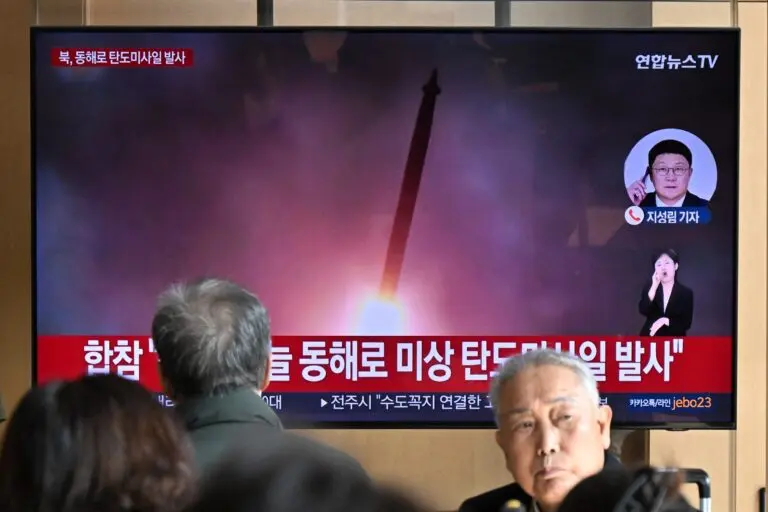North Korea fired a ballistic missile on Friday, Seoul’s military said, about a week after US President Donald Trump approved South Korea’s plan to build a nuclear-powered submarine.
Analysts have warned that Seoul’s move to construct an atomic-powered vessel could provoke a strong reaction from Pyongyang.
According to South Korea’s Joint Chiefs of Staff, North Korea launched an unidentified ballistic missile toward the East Sea, also known as the Sea of Japan.
Japanese Prime Minister Sanae Takaichi said the missile landed outside Japan’s exclusive economic zone, with no reports of damage or casualties.
Meanwhile, the Kremlin defended Pyongyang’s latest launch, saying North Korea — a key Russian ally during its campaign in Ukraine — had the “legitimate right” to ensure its security.
“We are respectful of the legitimate right of our friends in the DPRK (North Korea) to ensure their security and take measures for it,” Kremlin spokesman Dmitry Peskov told reporters.
Tokyo, a major US security ally, condemned the launch, calling North Korea’s repeated missile tests “absolutely unforgivable.”
“As seen from North Korea’s provocations, it’s never too early to accelerate efforts to revamp our defense capabilities,” Japanese Defense Minister Shinjiro Koizumi said. “We will consider all necessary steps to protect our nation’s peace and the lives of our people, without ruling out any options.”
South Korea’s military said the missile was launched at 12:35 p.m. (0335 GMT) from an area north of Pyongyang and flew about 700 kilometers (435 miles).
North Korea has ramped up missile testing in recent years, efforts analysts say are aimed at improving precision-strike capabilities, challenging both South Korea and the US, and testing weapons that could later be exported to Russia.
“From North Korea’s perspective, the possibility of sudden attacks from the East Sea will be a source of anxiety,” said Ahn Chan-il, a defector-turned-researcher who heads the World Institute for North Korea Studies. “If South Korea acquires a nuclear-powered submarine, it could enter North Korean waters and preemptively monitor or intercept weapons such as submarine-launched ballistic missiles.”
Trump recently announced that South Korea would build the submarine in the United States, but Seoul says it is considering constructing it domestically.
Unlike diesel-powered submarines, which must surface periodically to recharge, nuclear-powered submarines can remain submerged for extended periods, making them far more capable for surveillance and deterrence.
‘Irreversible’ nuclear state
Experts say developing a nuclear-powered submarine would mark a major leap in South Korea’s military capabilities.
Only a handful of countries — the United States, Australia, China, Russia, India, France, and Britain — currently operate or are developing nuclear-powered submarines, according to media and analysis reports.
Since the collapse of North Korean leader Kim Jong Un’s 2019 summit with Trump over the scope of denuclearization and sanctions relief, Pyongyang has repeatedly declared itself an “irreversible” nuclear state.
Kim has since drawn closer to Moscow, sending thousands of troops to fight alongside Russian forces in Ukraine and securing critical military and political backing from Russia.
Pyongyang did not respond to Trump’s recent offer to meet Kim last week. Instead, Foreign Minister Choe Son Hui traveled to Moscow, where she and Russian President Vladimir Putin agreed to strengthen bilateral ties.
In September, Kim appeared alongside Chinese President Xi Jinping and Putin at a grand military parade in Beijing — a striking display of his elevated position in global politics.
Trump met Kim three times during his first term, famously saying the two leaders had “fallen in love,” but ultimately failed to secure a lasting agreement on North Korea’s nuclear program.
South Korean lawmaker Lee Seong-kweun said this week that Seoul’s spy agency believes Kim remains open to talks with Washington “and will seek contact when the conditions are in place.”
Although the proposed meeting with Trump did not materialize, “multiple signs suggest” Pyongyang had been preparing behind the scenes for potential discussions with the US, the lawmaker added.
AFP


